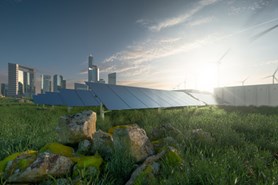The annual Conference of the Parties (COP) summit is taking place in the UAE and has the power to shape the future of climate policy. With the conclusion of the first-ever global stocktake showing us we are vastly offtrack to limit warming to 1.5 degrees C, the outcomes and commitments will be key to the future of humanity. In this article we look at three highlights to look out for this conference, and the importance of language and terminology.
Key talking points and announcements so far
- The Global Stocktake is released at COP – The first 5-year inventory of how the world and stakeholders are doing to limit global warming to 1.5 C.
- The launch of the Loss and Damage Fund – the first piece of good news to come out of COP28 offers a ray of hope for the world’s poorest nations. This is a pot of money administered by the World Bank, that wealthy nations and major polluters will put millions of dollars into, with initial commitments standing at US$430 million. The UAE and Germany have both committed $100 million each, the UK £40 million for the fund and £20 million for other arrangements, US $17.5 million and Japan $10 million. COP28 Presidency unites the world on Loss and Damage.
- Fossil fuel companies pledge to reduce methane emissions to near-zero by 2030. This has been signed by around 50 fossil fuel companies. This only covers the scope 1 and 2 methane emissions not those from the combustion of their products, but again is a small step in the right direction.
Language and terminology
The strength of the agreements to come out of this Conference will revolve around the language used. During COP26 in Glasgow, last minute changes were made to the language when announcing critical climate commitments, such as the changing of “phase out” to “phase down”. This watering down of policy language is common at COP, and this year may be no different. New and updated terminology comes up at every conference too, and it's important to understand what things actually mean. It's easy to mistake it for talk or jargon, but leaders are using these terms and agreeing to policies that will hugely impact our planet, our businesses, our everyday lives.
One new term that has been floating around is ‘abated vs unabated fossil fuel’. This is critical because we know that human induced warming is being caused by the burning of fossil fuels, but there are also other health impacts of their combustion from poisonous chemicals to particulate matter that is killing an estimated 5 million people per year (BMJ). There have also been questions raised on the scalability and the efficiency of these technologies going forward.
Terms
Greenhouse Gas (GHG) emissions – these are gasses that we emit, primarily through the burning of fossil fuels, that lead to the heating of the planet.
Phase out fossil fuels – the pathway that ends in a complete stop of the burning of fossil fuels.
Phase down fossil fuels – the reduction in fossil fuel use without an endpoint of completely stopping their use.
Unabated fossil fuels – the fossil fuels that are burned, where the CO2 is not captured before reaching the atmosphere. The key here is the warming effect of the fuels may be limited, but the particulate matter and health harming gases are still released.
Global stocktake – every 5 years an inventory is taken to allow countries and stakeholders to see where they’re making action towards limiting global warming to 1.5 degrees Celsius and where they’re not.
Mitigation – reducing the amount of GHG emissions released into the atmosphere and increasing the amount of carbon removed through sinks.
Carbon sinks – any process, activity or mechanism which removes a greenhouse gas, an aerosol or a precursor of a greenhouse gas from the atmosphere.
Carbon capture and storage (CCS) – the method of artificially pulling carbon from air, normally in the exhausts of power plants and burying the carbon underground. Sometimes referred to as carbon capture, utilisation and storage (CCUS), there is also an effort by the fossil fuel industry to use the carbon dioxide captured from these plants and use it for enhanced fuel recovery, allowing for more oil and gas to be extracted from the ground.
Direct air carbon capture (DAC) – similar to CCS, except you are pulling it out of the atmosphere where it is in lower concentrations.
1.5 degrees Celsius – the amount of average warming, compared to the 1850 – 1900 average, that we are trying to limit the global system to
2 degrees Celsius – the amount of warming, compared to the 1850 – 1900 average, that human civilisation has never experienced before.
References
For a full glossary of climate terms, please see: Annex VII: Glossary (ipcc.ch), from the IPCC:
IPCC, 2021: Annex VII: Glossary [Matthews, J.B.R., V. Möller, R. van Diemen, J.S. Fuglestvedt, V. Masson-Delmotte, C. Méndez, S. Semenov, A. Reisinger (eds.)]. In Climate Change 2021: The Physical Science Basis. Contribution of Working Group I to the Sixth Assessment Report of the Intergovernmental Panel on Climate Change [Masson-Delmotte, V., P. Zhai, A. Pirani, S.L. Connors, C. Péan, S. Berger, N. Caud, Y. Chen, L. Goldfarb, M.I. Gomis, M. Huang, K. Leitzell, E. Lonnoy, J.B.R. Matthews, T.K. Maycock, T. Waterfield, O. Yelekçi, R. Yu, and B. Zhou (eds.)]. Cambridge University Press, Cambridge, United Kingdom and New York, NY, USA, pp. 2215–2256, doi:10.1017/9781009157896.022
Health study
Lelieveld J, Haines A, Burnett R, Tonne C, Klingmüller K, Münzel T et al. Air pollution deaths attributable to fossil fuels: observational and modelling study BMJ 2023; 383 :e077784 doi:10.1136/bmj-2023-077784

George Harle
ESG Coordinator
- george.harle@gleeds.com
- +44 (0)7917 461 501



